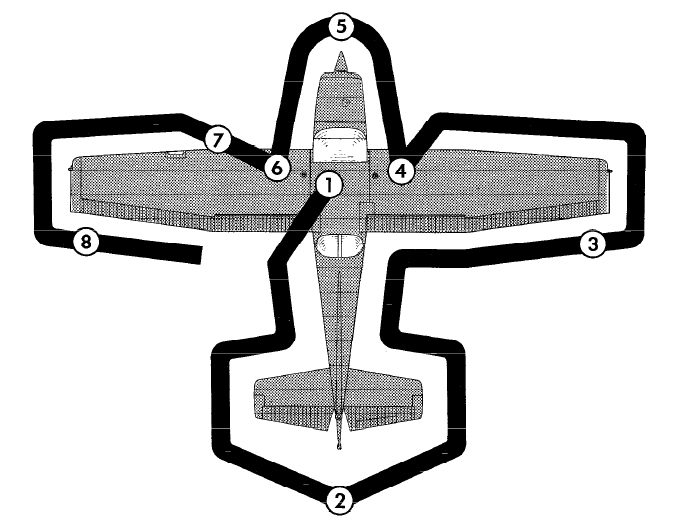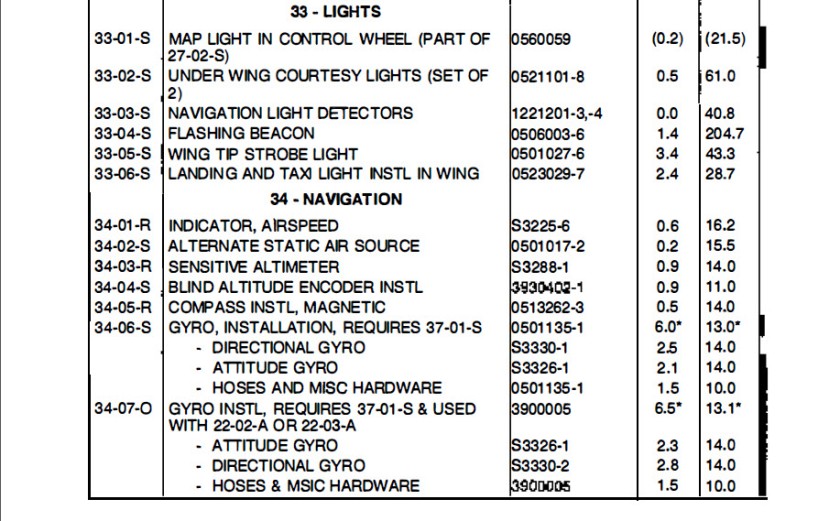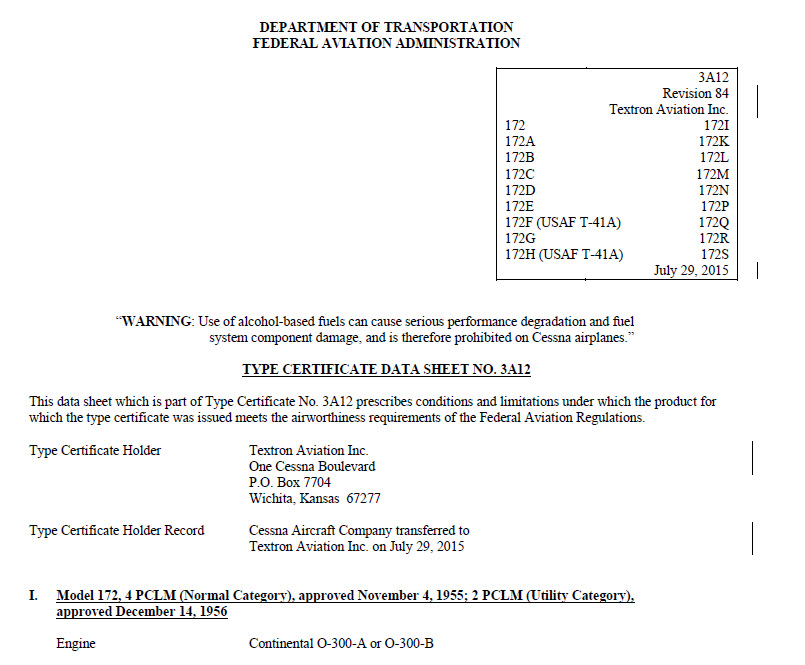Many pilots struggle with the regulations and procedures to follow when a preflight inspection or other before-takeoff check reveals a burned-out position light, a non-functional autopilot, or other inoperative equipment. Here’s a basic guide to help you through the thicket of FAA regulations and policies.
This discussion assumes you are operating a typical light GA aircraft under 14 CFR Part 91 and you’re not using a minimum equipment list (MEL). MEL are typically available only for multiengine and large aircraft, and they’re most often used in commercial operations. Note also that as of November 3, 2017, AC 91-67 – Minimum Equipment Requirements for General Aviation Operations Under FAR Part 91, has been canceled, pending a revision that “align[s] with the latest ICAO guidance.”
Before you begin the preflight inspection, review 14 CFR §91.7 Civil Aircraft Airworthiness:
§91.7 Civil Aircraft Airworthiness
(a) No person may operate a civil aircraft unless it is in an airworthy condition.(b) The pilot in command of a civil aircraft is responsible for determining whether that aircraft is in condition for safe flight. The pilot in command shall discontinue the flight when unairworthy mechanical, electrical, or structural conditions occur.
Simply put, as PIC, you–not your mechanic, or the FBO from which you rent an airplane, or the partner(s) with whom you share an aircraft–are responsible for determining whether the aircraft you’re about to fly is legally airworthy and safe to operate.

Assume that during the preflight inspection, you discover that one of the wingtip position lights has burned out. The key questions to ask are:
- Can you fly the airplane?
- How can you comply with the applicable FAA regulations?
Many pilots think that such minor malfunctions require nothing more than recalling the required equipment regulations for day or night, VFR or IFR flight (14 CFR §91.205), and, if necessary, putting an “inoperative” sticker near the appropriate switch or gizmo before taking off.

The proper procedure, however, involves methodically tracing your way through several FAA regulations and references, including the aircraft flight manual (AFM) and associated aircraft documents.
Key FAA Regulations (14 CFR Part 91) and Documents
- §91.7 Civil Aircraft Airworthiness
- §91.205 Powered civil aircraft with standard category U.S. airworthiness certificates: Instrument and equipment requirements
- §91.213 Inoperative instruments and equipment
- §91.405 Maintenance required
- Aircraft approved flight manual (AFM) or operating handbook (POH)
- Applicable STC supplements
- Aircraft Type Certificate Data Sheet (TCDS)
The process you must follow is described in §91.213 (PDF flow chart here). You are allowed to continue with the flight provided:
§91.213
…
(2) The inoperative instruments and equipment are not—(i) Part of the VFR-day type certification instruments and equipment prescribed in the applicable airworthiness regulations under which the aircraft was type certificated;
(ii) Indicated as required on the aircraft’s equipment list, or on the Kinds of Operations Equipment List for the kind of flight operation being conducted;
(iii) Required by §91.205 or any other rule of this part for the specific kind of flight operation being conducted; or
(iv) Required to be operational by an airworthiness directive
(3) The inoperative instruments and equipment are—
(i) Removed from the aircraft, the cockpit control placarded, and the maintenance recorded in accordance with §43.9 of this chapter; or
(ii) Deactivated and placarded “Inoperative.” If deactivation of the inoperative instrument or equipment involves maintenance, it must be accomplished and recorded in accordance with part 43 of this chapter; and
(4) A determination is made by a pilot, who is certificated and appropriately rated under part 61 of this chapter, or by a person, who is certificated and appropriately rated to perform maintenance on the aircraft, that the inoperative instrument or equipment does not constitute a hazard to the aircraft.
Here’s a flow chart that outlines the basic process described in §91.213.

Throughout the following discussion, note that if the defective or inoperative item is required at any of the decision points, maintenance or obtaining a ferry permit (technically a Special Flight Permit) is required before you can fly.
Begin by determining whether inoperative item is required under the basic regulations for VFR or IFR flight during the day or night (§91.205), including key engine instruments, altimeter, airspeed indicator, magnetic direction indicator, and so forth. Operations at night and under IFR (regardless of prevailing weather conditions) require additional instruments and equipment, such as lights (night) and radios and gyroscopic instruments (IFR).
If the item isn’t specifically listed in §91.205(a)-(d), next determine if it’s required by the AFM/POH equipment list or kinds of operations list (examples below).




If the item isn’t required by those equipment lists, or if you have an old AFM/POH that doesn’t include equipment lists, next confirm that the item is not required by the aircraft’s type certificate data sheet (TCDS). You can download PDF versions of TCDS from the FAA website, here. These data sheets are usually long and not easy to read, but you can search the PDF for your aircraft to help you locate specific model/serial numbers or items.

If the item isn’t required by the TCDS, review any STC supplements that apply to your aircraft. For example, if you’ve installed new avionics or electronic instruments in the panel, the STC under which that equipment was installed may contain specific limitations, such as additional sources of electrical power.


Next, you must confirm that the item isn’t required by an airworthiness directive (AD). You can find ADs on the FAA website, here. Again, ADs can be difficult to parse. If you have questions, it’s best to consult a maintenance technician. Aircraft type and owner clubs are also good sources of information about ADs.
If you’ve answered “no” at each step of the process, you can proceed–but you must follow the proper procedure to deactivate or remove and then placard the item. And you must record the discrepancy and action taken in an appropriate record (§91.405 and §43.11).
Options at this point include disabling a switch, pulling and collaring a circuit breaker, or removing the equipment following the appropriate procedure. If the inoperative item is controlled by anything other than a simple switch, it’s best to consult a maintenance technician.
Finally, as PIC, you must determine that the aircraft is safe to operate under the conditions expected for the flight.
Note that you can’t continue to operate indefinitely with inoperative/defective equipment. See §91.405(c) and the De Joseph letter (2017) from the FAA chief counsel. In general, at the next required inspection the item must be repaired, replaced, or removed and the action properly documented by a maintenance technician.

However, in the Peri Letter (2018), FAA explained that if inoperative equipment is inspected and evaluated at the periodic inspections required under 14 CFR Part 91:
…if the inoperative instrument or item of equipment is not repaired, replaced, or removed at the next required inspection, the inoperative item must be inspected again (reevaluated) at that inspection in order to ensure that the discrepancy will not have an adverse effect on the safe operation of the aircraft….
Under the regulation at issue, the process of reevaluating the item at each required inspection may be continued “indefinitely,” so long the reevaluation is accomplished and documented at each required inspection.
The process described here is cumbersome, especially when you’re away from your home airport without easy access to references and technical advice.
But here’s a good rainy-day project. Create a list of equipment in your aircraft that isn’t clearly required by §91.205 for a typical day or night VFR flight, such as lights, avionics, accessories (seats, cabin heat, power plugs, speakers, etc.). Follow the flow chart, consult the resources described here, and note whether those items would be necessary for a flight under those circumstances.
If you fly IFR, add or note the equipment, beyond the basics in §91.205, that is required by the documents for your aircraft–regardless of the weather–to operate under those rules.
Keep those lists in your aircraft (or on your tablet or phone) so that you can quickly and easily determine whether you can proceed.
Additional References and Resources











